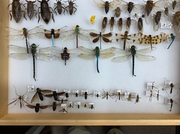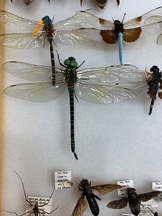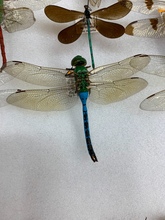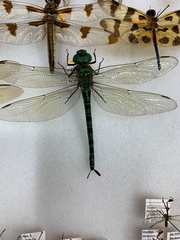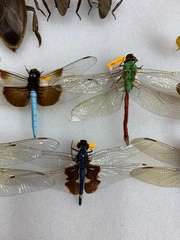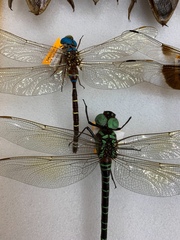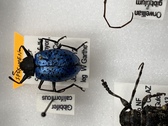Artistically Enhanced for color fading after killing specimens
Photo Gallery
these specimens, mostly odonatas, lose their color soon after dispatching. I’ve tried all kinds of techniques to maintain color to no avail. I’ve decided that my desire to see them as they were when caught was an utmost priority for me. Here is what I did.....
First......take a pic when freshly caught for reference later on
Second.....after mounting and off boards, I use acrylic paint to touch up the colors using the pic as a reference. In some cases like the fungus beetle which very quickly turns black, I use multiple paint washes to create the blue effect of the fresh specimen. I try very hard to match the colors and intensity so as to portray the specimen most realistically. No extra color beyond what the pic illustrates. Also, since the paint was acrylic, one could conceivably soak it in water to remove the paint.
Thirdly.......below each specimen’s data label, I make an orange label that identifies the specimen as having been “Artistically Enhanced”. I feel it’s important to properly identify the specimen as being not quite natural/color enhanced.
Finally......I realize that the scientific nature of the specimen has been diminished, but my desire to see it like I caught it in my collection supersedes having a dull, blackish, colorless scientifically sound specimen. This is just what I do with a very few insects to represent the specimen as best I can.
Sample Photo 1
Sample Photo 2
Sample Photo 3
Sample Photo 4
